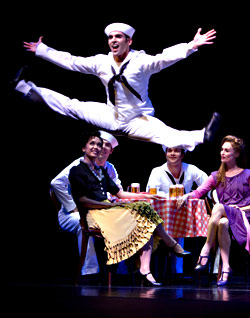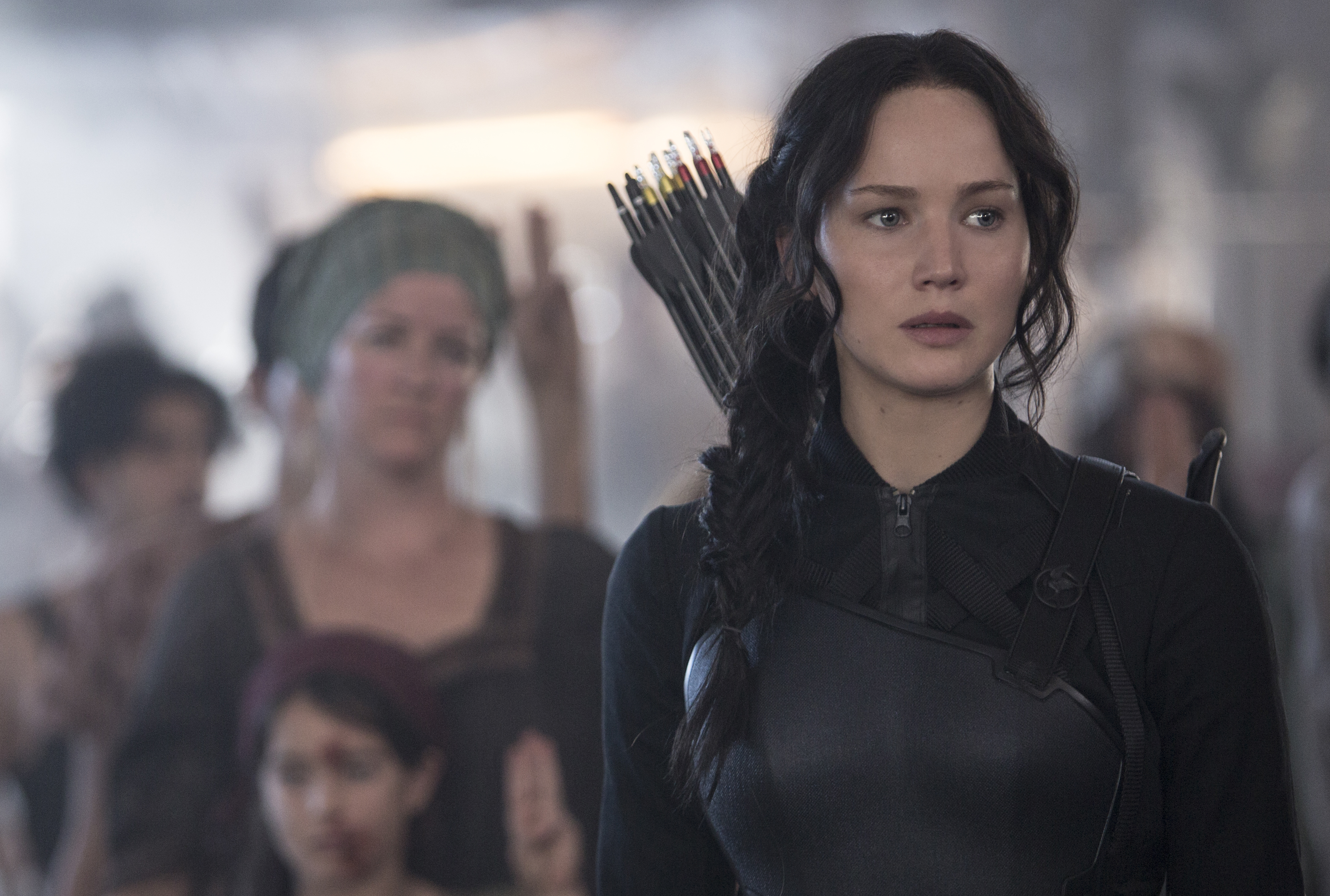Pacific Northwest Ballet calls the opening show of its subscription season “Director’s Choice,” and the pieces chosen for the program by artistic director Peter Boal strongly reflect the breadth of his taste. The opening work is the local debut of Fancy Free, the dance that in 1944 introduced to a delighted New York audience the jazzy classo-pop of Leonard Bernstein and the genre-bending choreography of Jerome Robbins. The piece has aged gracefully but oddly. The least effective segments are the sailors-on-shore-leave-looking- for-a-dame trios. The jokey, stylized camaraderie of Robbins’ swabbies and the finger-popping, pelvis-tilting movement he set for them must have seemed dazzlingly original when new, but after nearly 60 years of more or less literal emulation by lesser choreographers from Gene Kelly to Bob Fosse, it seems almost routine. Only powerful and idiosyncratic character dancing can individualize these figures.
In contrast, the three character solos for the sailors as they compete for attention seem fresh as a daisy. Company principals Casey Herd and Jonathan Porretta haven’t quite found the cores of their characters yet, but guest dancer Rasta Thomas shows how vividly personal Robbins’ steps can be. And as the ladies for whom they preen, Noelani Pantastico and Louise Nadeau, hot and cool respectively, already have their characters firmly nailed down. The big pas de deux for Herd and Nadeau remains one of Robbins’ most memorable dance creations.
The audience raged at the conclusion of William Forsythe’s 1987 in the middle, somewhat elevated, and as a salute to the cast’s technical brilliance and sheer endurance, the ovation was wholly warranted. I couldn’t join their enthusiasm, though. I felt as if I had been severely beaten about the face and head with sofa cushions. I am confident that if I watched the piece several more times, I would find in it the formal rigor and expressive range that Boal no doubt sees in it. But my ears just couldn’t take that. Thom Willems’ synthesized score, a nonstop percussive agitation to a relentless four-four beat, was played at such volume that a 20-minute intermission wasn’t enough to silence the ringing in my ears.
The concluding work of the evening brought relief. George Balanchine created Theme and Variations in 1947 for Ballet Theater, at a time when complete productions of the big Russian story ballets were beyond the financial and personnel resources of America’s fledgling dance companies. Its air of abstract elegance and celebration can seem a little chilly and unemotional. In fact, it comes into focus if one regards it as the grand finale of a Petipa- Tchaikovsky collaboration—The Student Prince, perhaps? —with all the pantomime and processions and plot complications shorn away.
With the 12 boys entering only for the final polonaise, the focus is on the two soloists and the quartet and octet of girls in their stiff cherry red tutus. The latter performed their framing roles beautifully, as precise as Rockettes but fluidly graceful. I’ve never seen PNB’s female corps look so unassertively sure of itself. As the prince figure, Stanko Milov provided a solid, even stolid impersonation of courtly partnering, while Patricia Barker danced with her customary delicately pointed elegance, but with a warmth of expression that made of her abstract princess a radiant woman. I could hardly credit that the same dancer had just snapped and torqued and jittered through 20 minutes of Forsythean choreo-aggression. I salute you, mademoiselle.









